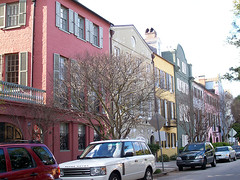“Smaller homes, urban lifestyles and sustainable communities will shape development”

Posted February 9, 2010 at 1:30PM
Add Charleston, South Carolina, real estate analysts Diana Permer and Jim Chaffin to the chorus of observers who see the end of sprawl as we have known it. Permer is principal of the real estate consulting firm Permar Inc. and Chaffin is a principal with the development firm Chaffin Light Associates. Both spoke last week to South Carolina’s annual Urban Land Institute conference.
Writing in the Charleston Regional Business Journal, Ashley Fletcher Frampton summarized the two speakers’ main points as, “Younger generations looking for smaller homes, urban lifestyles and sustainable communities are among the forces that will shape the future of real estate development.” Frampton continued: “Some of the shifts in demand are related to demographics and were emerging before the economy sank, the speakers said. Others are results of new, post-recession values.”
This places the two Low Country experts squarely in the mainstream of thinking about development trends. Frampton’s article, in fact, suggests that Permer and Chaffin agree with my friend, market analyst Laurie Volk, that the convergence of baby boomers approaching retirement and their kids reaching settling-in age will dominate the housing market for some time to come, and many more of both prefer more urban lifestyles than did their predecessors.
I particularly love this passage:
“Both speakers said the move toward sustainable development and green building practices is a given.
‘Frankly, it’s only a matter of time before all new buildings will be green buildings,’ Chaffin said.
Developers who don’t believe that ‘will be roadkill,’ he said.”
Other predictions include a reduction in home ownership, in part because the attraction of a residence as investment has waned, and an increase in suburban walkability. Read the article here.
Thanks to Ann Daigle for pointing me to this article.

